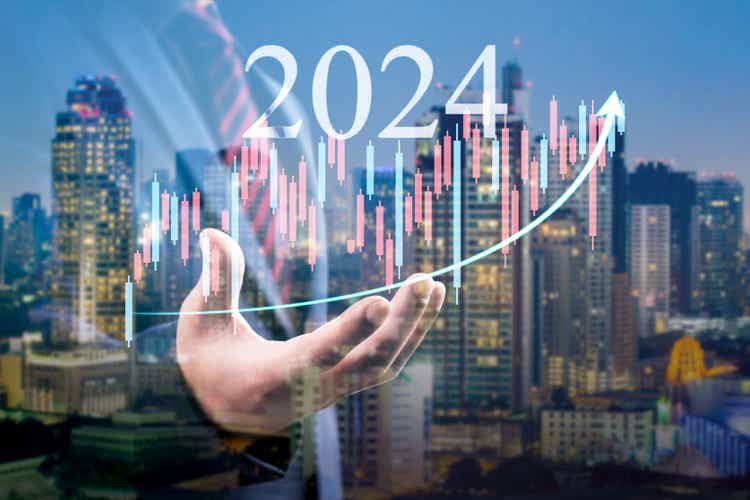
Totojang/iStock via Getty Images
Stock futures rose during early trading on Wednesday, despite comments from Federal Reserve Chairman Jerome Powell, who indicated that rate cuts will likely take longer to materialize, citing a slew of recent inflation data.
Here are some of Wednesday’s biggest stock moves:
Biggest Gains in Stocks
- United Airlines (UAL) stock. increased by up to 5% after surpassing the consensus level in its first quarter results. The company generated $2.8 billion in operating cash flow and free cash flow of $1.5 billion and reported passenger revenue growth of 10.1% y/y for the quarter, led by gains in the Pacific (+44% y/y) and Europe (+11% y/y) segments. Looking ahead, airlines expect fiscal 2024 adjusted EPS of between $9 and $11, in line with the consensus of $9.43.
Biggest stock losers
- JB Hunt Transport Services (JBHT) shares fell about 5% following the company’s first quarter results, which did not meet market expectations. The company reported a 9% decline in revenue and its profits fell nearly 35% year over year. This decline was primarily driven by a 9% decline in segment gross revenue per load in both intermodal and truckload transportation, 22% fewer loads in integrated capacity solutions, a 40% decrease in intermodal operating income and a 75% decrease in truckload operating income.
- Shares of ASML Holdings (ASML) fell by more than 4% after reporting mixed results in the first quarter, with revenue falling 21% y/y. Despite this, the company maintains its outlook for fiscal 2024, expecting total net sales to be similar to 2023. ASML CEO Peter Weennink said, “Our full-year 2024 outlook is unchanged , with the second half of the year expected to be stronger than the previous year’s first half, in line with the sector’s continued recovery from the crisis.” He further underlined: “We see 2024 as a transition year with continued investments in both capacity and technology to be ready for the turning point in the cycle.”